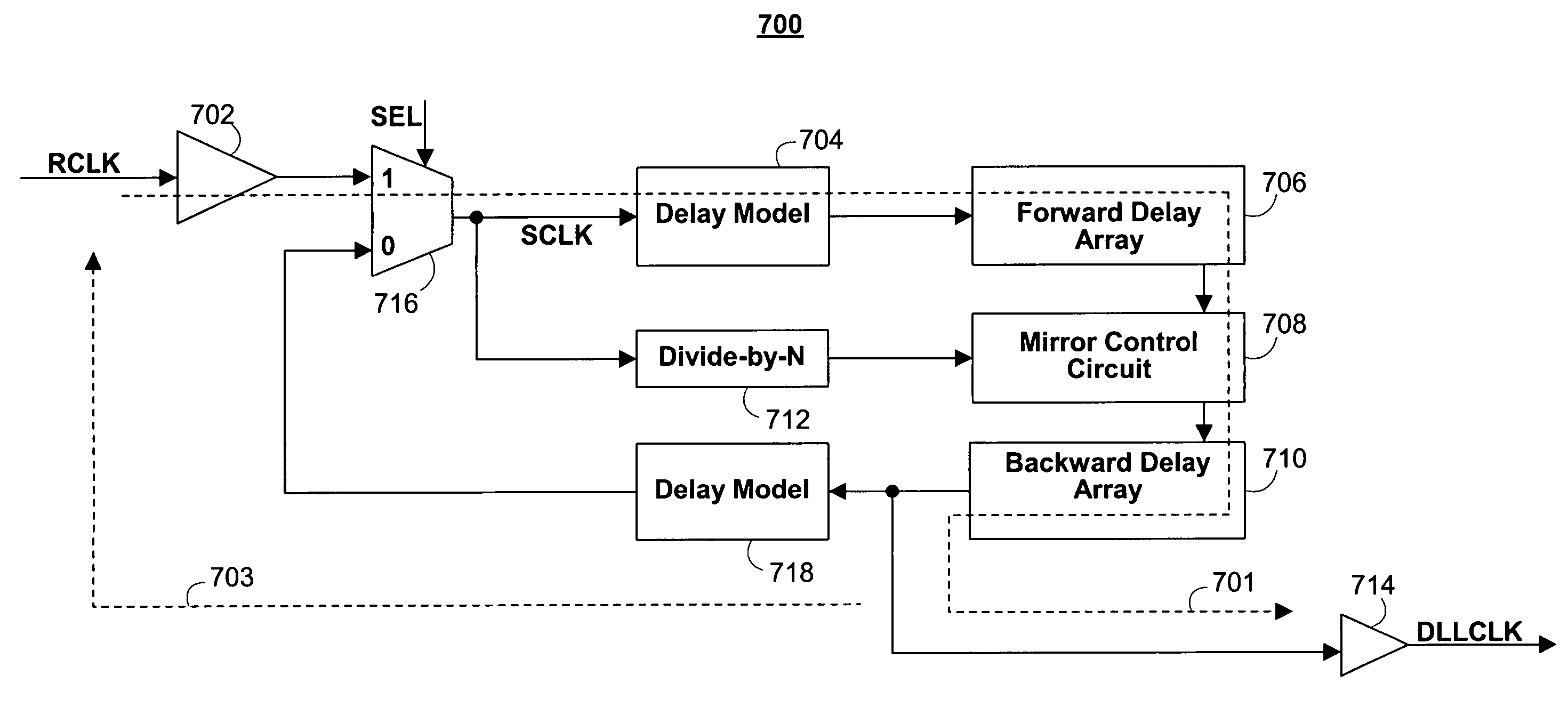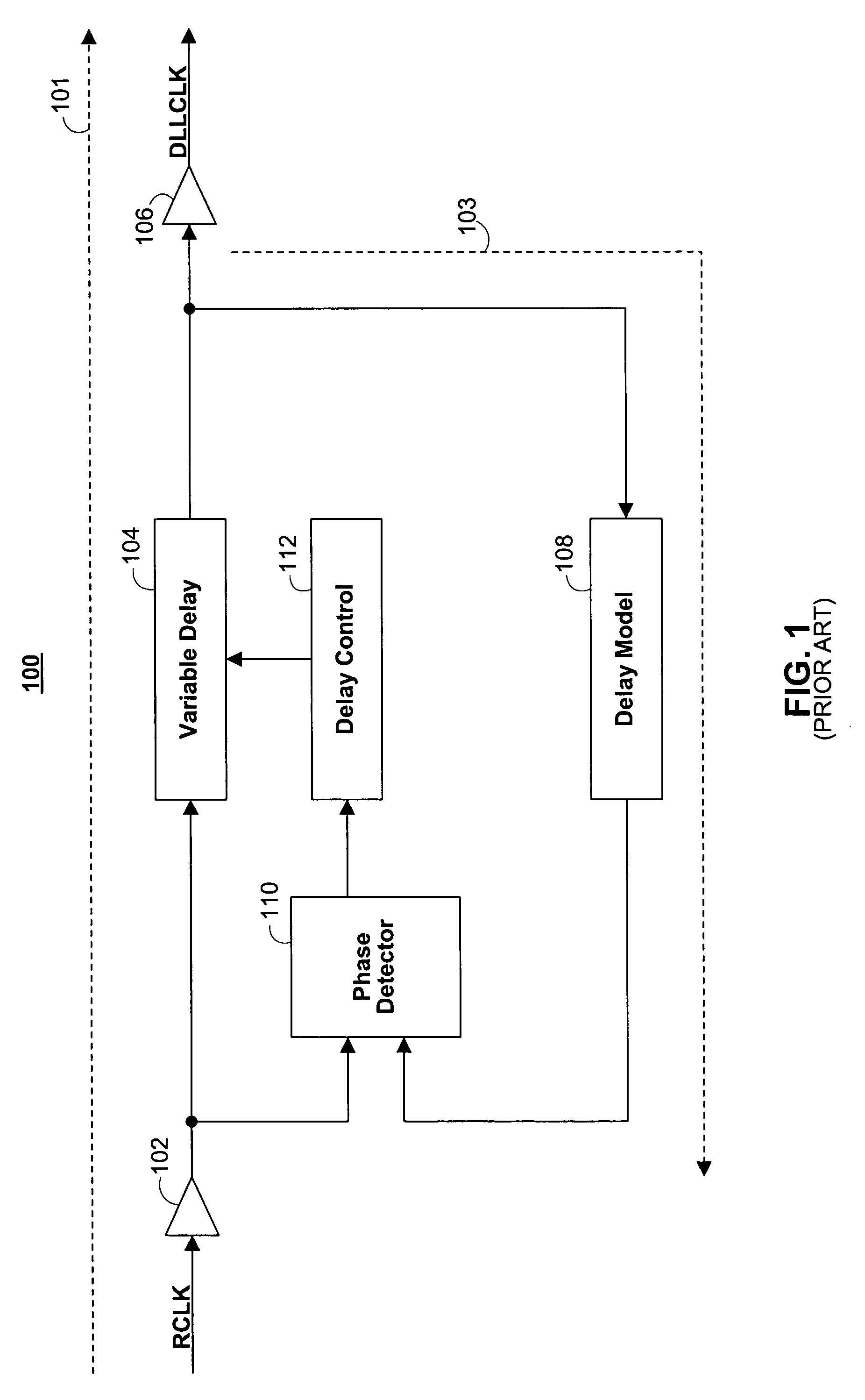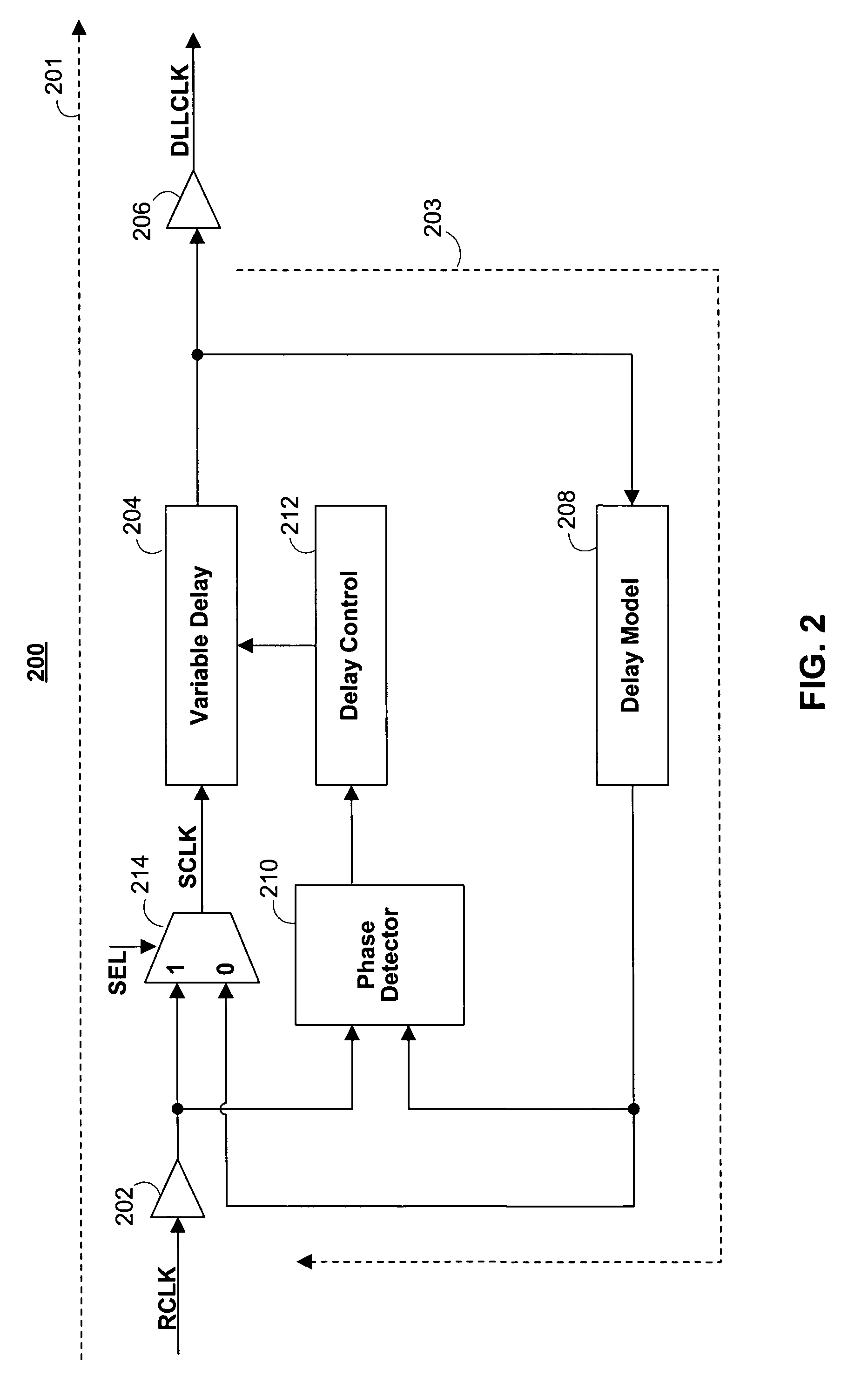Clock capture in clock synchronization circuitry
a clock synchronization and clock technology, applied in the direction of digital storage, pulse automatic control, instruments, etc., can solve the problems of timing errors, input signal jitter, output of synchronization circuitry may also be susceptible to input signal jitter, etc., to reduce input referred jitter and reduce signal degradation
- Summary
- Abstract
- Description
- Claims
- Application Information
AI Technical Summary
Benefits of technology
Problems solved by technology
Method used
Image
Examples
Embodiment Construction
[0025]The invention provides clock capture in clock synchronization circuitry that can then output a temporary self-sustaining synchronized clock signal. The invention also reduces input referred jitter in the synchronized clock output signal.
[0026]FIG. 1 shows a typical delay-locked loop (DLL) synchronization circuit 100. Reference clock signal RCLK is input to DLL 100, and output signal DLLCLK is a delayed, synchronized version of clock signal RCLK. The phase difference between RCLK and DLLCLK is ideally zero.
[0027]DLL 100 typically includes input buffer 102, variable delay 104, output buffer 106, delay model 108, phase detector 110, and delay control 112. Following forward signal path 101, reference clock signal RCLK enters variable delay 104 through input buffer 102. Input buffer 102 delays the input clock signal RCLK by delay D1. Variable delay 104 adds an adjustable amount of delay and outputs the clock signal through output buffer 106 as DLL output signal, DLLCLK. Output buff...
PUM
 Login to View More
Login to View More Abstract
Description
Claims
Application Information
 Login to View More
Login to View More - R&D
- Intellectual Property
- Life Sciences
- Materials
- Tech Scout
- Unparalleled Data Quality
- Higher Quality Content
- 60% Fewer Hallucinations
Browse by: Latest US Patents, China's latest patents, Technical Efficacy Thesaurus, Application Domain, Technology Topic, Popular Technical Reports.
© 2025 PatSnap. All rights reserved.Legal|Privacy policy|Modern Slavery Act Transparency Statement|Sitemap|About US| Contact US: help@patsnap.com



